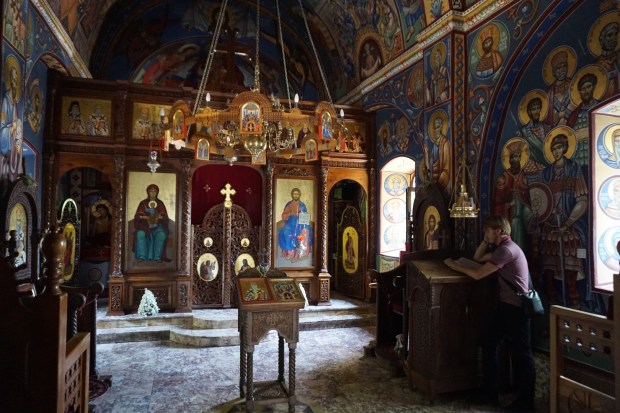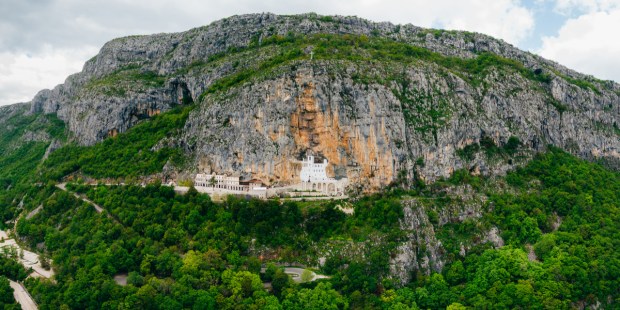Ostrog Monastery is the most popular pilgrimage place in Montenegro. It stands as a beacon of Serbian Orthodox faith, its existence being inextricably linked with the legacy of St. Basil of Ostrog, who is buried there. This 17th-century sanctuary, seemingly carved out of a sheer cliffside, reflects the spiritual influence of this revered figure.
Born Stojan Jovanović, Basil rose to the position of Metropolitan Bishop of Zahumlje and Herzegovina – a region facing severe challenges during the Ottoman era. Seeking refuge, he turned to the Ostrog caves, where he established a hermitage. Basil’s spiritual leadership shone brightly, attracting followers and pilgrims even during his lifetime. He became a symbol of resistance, devotion, and enduring faith.

Following Basil’s death in 1671, he was interred within the monastery, and his relics became a magnet for those seeking spiritual advice and solace. The monastery grew around this site, with the Upper Monastery showcasing the cave-churches where St. Basil lived. Of particular note is the Church of the Presentation of the Theotokos, embellished with vibrant frescoes illustrating biblical scenes. These frescoes, alongside the relics of St. Basil, create a potent contemplative atmosphere for pilgrims.
Beyond theological distinctions between Catholicism and Serbian Orthodoxy, Ostrog Monastery holds immense value as a testament to the transformative power of spiritual leadership. The enduring popularity of Ostrog Monastery underscores the profound impact of St. Basil’s guidance. It serves as a reminder of Christian monastic heritage in Europe, shaped profoundly by the steady faith and lasting legacy of saints like Basil. Their example continues to inspire pilgrims who traverse the challenging paths to this stunning sanctuary – and many others.

Stories of miracles and healings attributed to his intercession have passed down through generations, solidifying his place as a beloved figure within Christianity. A testament to the enduring power of saints within Christian devotional life, this monastery bears witness to the ability of a single figure to inspire devotees and pilgrims throughout centuries.



